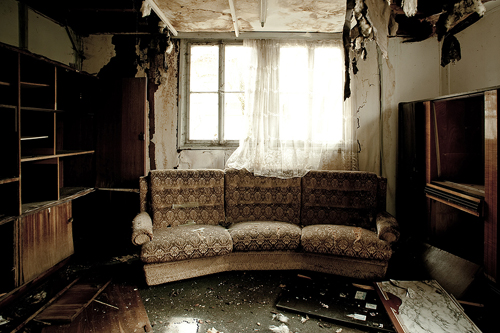
Contents
While the burn damage from a fire is often the biggest priority for property owners, there is another type of damage, smoke damage, that can have an equally damaging effect on homes and businesses.
As the name implies, smoke damage doesn’t burn things the way fire damage does, but it has its own host of hazards to watch out for.
And, while smoke appears to be just one thing, the reality is that depending on the source of what’s burning and other conditions, there are different types of smoke damage to be aware of.
Here Are 4 Types of Residential and Commercial Smoke Damage…
Dry Smoke
This is the smoke most people are familiar with and is typical of high-temperature fires from sources such as wood or paper. Dry smoke is one of the most common fires in residences due to the use of wood in construction and furniture and the presence of paper products such as books and magazines. The residue left behind by dry smoke is typically dry and powdery, making it one of the types of smoke damage that is comparatively easy to clean up with some elbow grease.
Wet Smoke
As to be expected, if there’s a smoke considered “dry,” then there is an opposite number that is wet. Wet smoke arises from objects burning at a lower temperature, but wet smoke comes from plastic or rubber products instead of paper or wood products. Again, this is a fairly common type of smoke damage in many properties, as many products, such as home electronics, are made of plastic. This smoke gets its name from the thicker, oilier smoke that leaves a wet residue and smells strongly of burnt synthetics. It is extremely difficult to remove and best left to experts.
Protein Smoke
If this type of smoke damage occurs, the most likely locations are the kitchen of a home or a restaurant. As the name suggests, protein smoke arises from burning organic matter, typically meat or cooking oils. One of the most challenging aspects of protein smoke damage is that, unlike wet or dry smoke, it doesn’t leave a dark stain and is typically clear but discolors areas it settles on, like a film. Property owners see this through regular cooking as oils discolor the walls and surrounding environment near a stove.
Fuel/Oil Smoke
This type of smoke damage occurs most commonly in a garage or workshop in homes, although it is the more common threat at industrial facilities, especially where large amounts of fuel or oil are stored. Fuel smoke is dense and sticky and clings to everything, leaving a strong, unpleasant odor in the area as long as smoke particles are present. Like wet smoke, the synthetic nature of this type of fire makes it extremely challenging to clean. Typically, only professional or industrial cleaning techniques effectively restore fuel or oil smoke-damaged items.
A Quick Response To Fire and Smoke Damage Is Critical
One of the most important things for people to remember when restoring damage from fire and smoke is that speed is crucial.
The faster a smoke cleanup team responds to recovering, preserving, and restoring items, the greater the chances of success. Always act quickly to have professionals, like Bright Side Restoration assess and restore your property.



